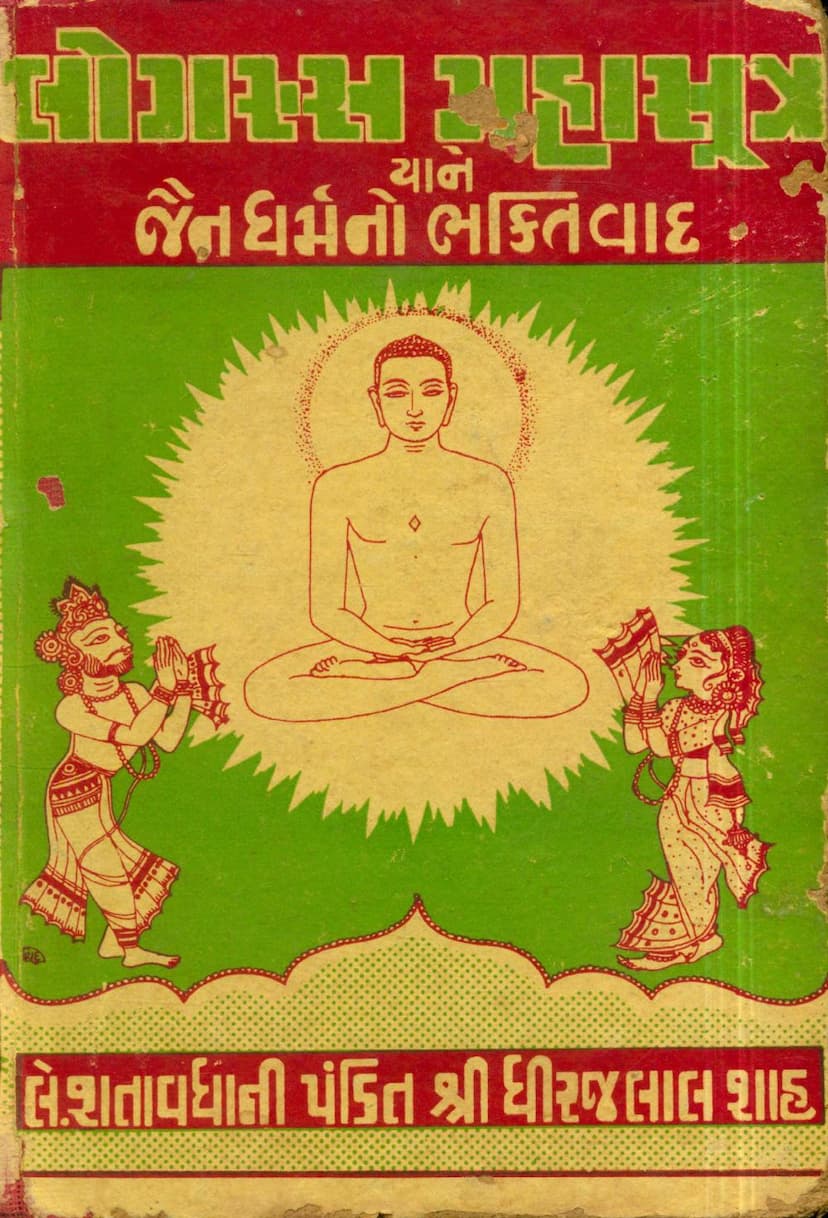Logassa Mahasutra Yane Jain Dharmno Bhaktiwad
Added to library: September 2, 2025

Summary
Here's a comprehensive summary of the Jain text "Logassa Mahasutra Yane Jain Dharmno Bhaktiwad" by Dhirajlal Tokarshi Shah, based on the provided pages:
Book Title: Logassa Mahasutra Yane Jain Dharmno Bhaktiwad (The Great Sutra of Loka, or Devotion in Jainism) Author: Pandit Shri Dhirajlal Tokarshi Shah (also referred to as Shatavadhani Pandit Shri Dhirajlal Tokarshi Shah) Publisher: Pragna Prakashan Mandir, Mumbai First Edition: V.S. 2035 (1979)
Overall Purpose and Content:
This book is a profound and detailed exploration of the Jain Logassa Mahasutra, a significant scripture in Jainism. The author, Pandit Dhirajlal Tokarshi Shah, aims to shed new light on the meaning and significance of this sutra, particularly in the context of devotion (Bhaktiwad) within Jainism. The book delves into the spiritual, philosophical, and practical aspects of the Logassa Sutra, presenting it not just as a ritualistic chant but as a foundational text for spiritual practice and understanding.
Key Themes and Contributions:
-
Deep Dive into Logassa Mahasutra: The book offers a meticulous analysis of the Logassa Sutra, examining its historical context, linguistic nuances, and philosophical underpinnings. It goes beyond a superficial understanding to explore the "abhava-rahasya" (unseen secrets) of the sutra.
-
Jain Adhyatmavad (Spiritualism) and Tirthankarvad: Pandit Shah elucidates the concepts of spiritualism within Jainism and the significance of the Tirthankaras. He positions the Logassa Sutra as central to understanding these core tenets.
-
The Essence of Jain Devotion (Bhaktiwad): A major focus of the book is to establish and explain the concept of devotion within Jainism. The author argues against the misconception that Jainism is solely intellectual or ascetic, highlighting how the Logassa Sutra serves as a powerful expression of devotion, connecting the devotee to the spiritual ideals.
-
Integration of Yoga, Mantra, and Yantra: The book incorporates knowledge related to yoga, mantras, and yantras, suggesting how these practices can be integrated with the study and recitation of the Logassa Sutra for enhanced spiritual benefit.
-
Author's Personal Connection and Experience: The author shares his deep personal connection with the Logassa Sutra, detailing his lifelong study, contemplation, and practice of it. He recounts specific instances, like a personal experience where reciting the Logassa Sutra helped alleviate a spiritual affliction, underscoring its practical efficacy.
-
Theological and Philosophical Depth: Pandit Shah's scholarship is evident as he discusses various philosophical concepts, including the meaning of "Loka" (universe/world) in Jain cosmology, the nature of "Jina" and "Arihant," and the principles of relative truth (Syadvada). He connects these concepts to the sutra's verses.
-
Detailed Analysis of Verses: The book provides an in-depth explanation of each verse of the Logassa Sutra, breaking down the meanings, contexts, and spiritual implications. He addresses potential interpretations and provides his scholarly insights.
-
Emphasis on Proper Pronunciation and Understanding: The author stresses the importance of correct pronunciation and understanding of the sutra's verses for effective spiritual practice, lamenting the lack of such emphasis in contemporary times.
-
Historical and Scriptural Context: The book traces the lineage of Jain scriptures, discussing the concept of Angas and Upangas, and the importance of preserving the original teachings. It also touches upon the historical process of scriptural compilation and preservation.
-
Practical Application and Benefits: The author emphasizes the practical benefits of reciting and contemplating the Logassa Sutra, which include peace of mind, spiritual upliftment, detachment from worldly desires, and ultimately, progress towards liberation (Moksha).
-
Comprehensive Structure: The book is well-structured, beginning with a prologue and progressing through various analytical chapters on the sutra's antiquity, significance, meaning, and the author's personal reflections. It also includes appendices such as lists of referenced texts, a table of contents, and details about the various esteemed individuals involved in the book's publication and presentation.
-
Inclusion of Supporting Figures: The book features a preface by Prof. Pratapkumar J. Tolia, and dedications and acknowledgments to various individuals and dignitaries, including religious leaders and prominent community members, highlighting the book's importance and the author's respected position.
Author's Legacy:
Pandit Dhirajlal Tokarshi Shah is presented as a prolific author and a scholar of deep spiritual insight (Adhyatmavisharad). This book is noted as his 363rd creation, a testament to his lifelong dedication to Jain literature and spirituality. His ability to elucidate complex spiritual concepts in simple and engaging language makes the text accessible to a wide audience.
Overall Significance:
"Logassa Mahasutra Yane Jain Dharmno Bhaktiwad" is presented as a vital resource for anyone seeking to understand the devotional aspect of Jainism through the lens of this significant sutra. It serves as a guide for spiritual practice, offering both intellectual understanding and practical application, encouraging readers to integrate the sutra's teachings into their daily lives for personal and spiritual growth. The book aims to foster a deeper appreciation for the Logassa Sutra and its potential to illuminate the path towards devotion and liberation.